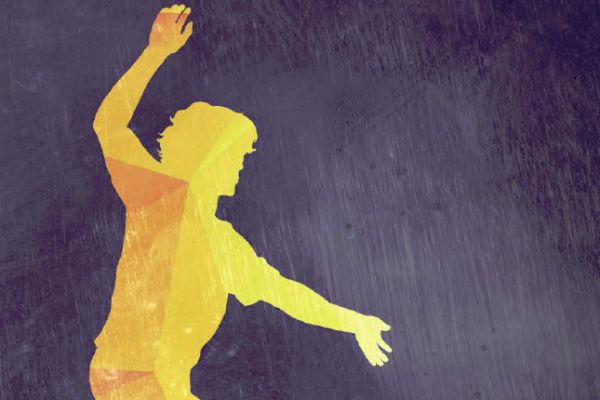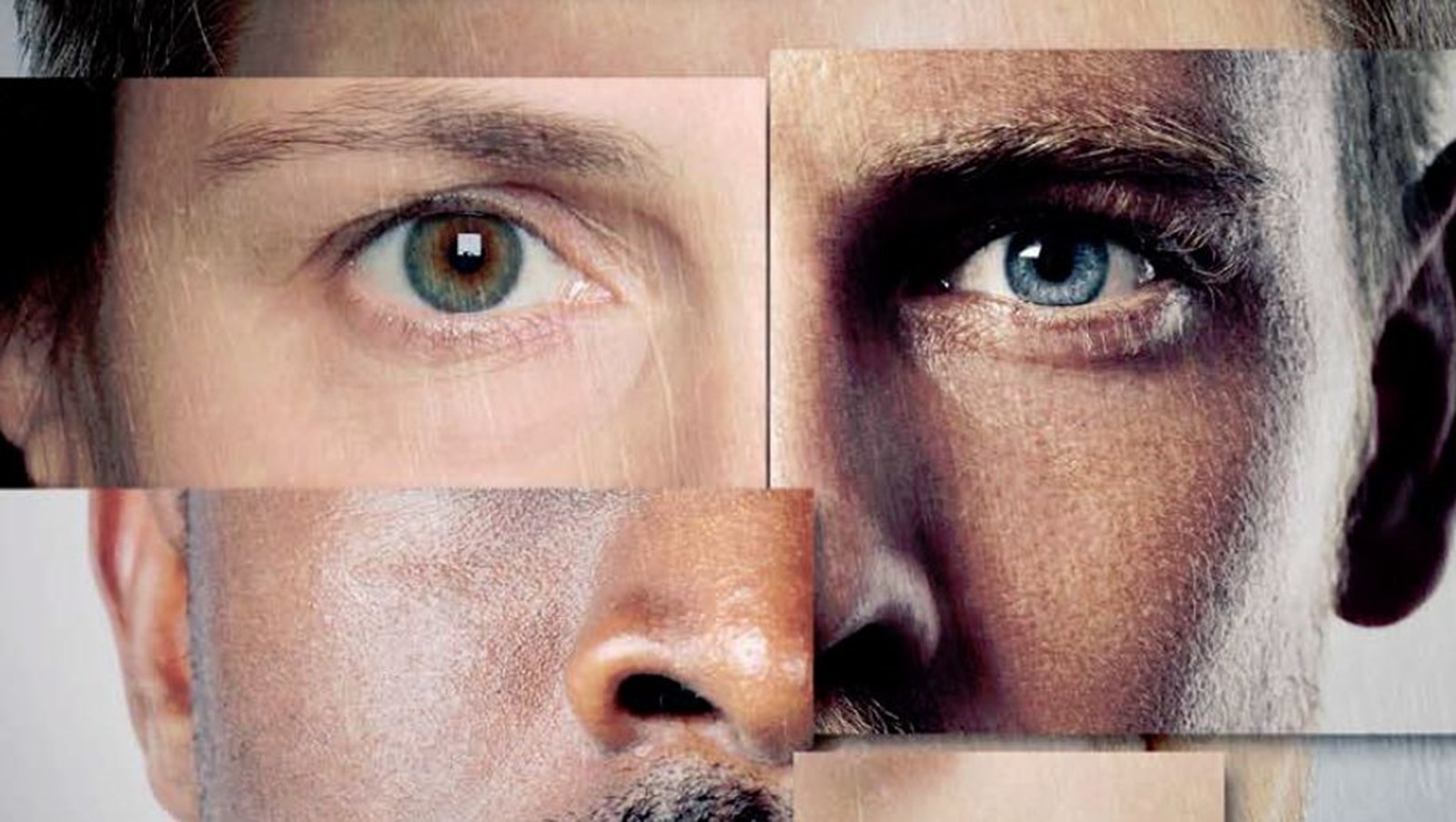My new client is early. She’s tall and lean and appears awkward in herself. She slumps into the chair and avoids eye contact. She tells me she’s travelled far and I’m surprised by how far. She tells me she’s searched far and wide for a counsellor who supports people like her. You see, Charley lives in a masculine body; a body that doesn’t match her gender identity. A body she describes as a prison with no windows. She tells me with sadness that when she confided in her previous therapist, she felt her withdraw. This rejection amplified as the therapist continued to refer to her as a man. I attempt to reassure Charley. I want to show her that she’s safe and welcome here; that this experience will be different. Yet I know how hard it will be for her to trust again.
For so many people who come out as transgender – someone whose gender identity doesn’t correspond with the sex assigned to them at birth – rejection is both a painful and common feature of their lives. Many find themselves rejected by loved ones and the toll on mental wellbeing can be immense. A recent study found alcohol and drug use increased, while risk of attempted suicide almost trebled upon family rejection.1 Meanwhile, LGBTQ+ young people are more likely to find themselves homeless than their non-LGBTQ+ peers – making up a quarter of the youth homeless population.2 This vulnerability puts them at risk of sexual exploitation. When people who are trans come to us, it’s vital we don’t shut our door. I write here to share my own experiences of trying to get things right for people who are trans or questioning their gender identity. I write in the hope that it will be helpful to other therapists, and so that ultimately trans people will get a better service than Charley did.
Terminology
A note here on terminology may be useful. Trans is used as an abbreviation of transgender and is generally a preferred term over transsexual. This is because the latter describes someone who has ‘crossed sexes’ by surgically changing their body to match their gender identity. The term trans is generally considered a more inclusive term, as it reflects the fact that not everyone has had, or intends to have, medical intervention, and that gender diversity can take many forms. Trans is used as an umbrella term to try to capture this variety. There’s some contention about whether drag artists and transvestites/cross-dressers fall under this umbrella, given their lack of discord felt around natal sex. Indeed, debate has previously erupted over drag queens using the word ‘tranny’, given its history as a slur against transwomen, suggesting their gender presentation is fraudulent.
Language is important and it’s crucial to respect the term the client chooses to express their gender identity. It’s essential to listen carefully for what gender pronoun a trans client uses, and a good idea to check this with them, rather than to assume. To call a client by the wrong gender pronoun (known as ‘misgendering’) can feel invalidatingand cause harm. Feedback I’ve heard from those who are trans is that if we make a mistake, it’s best practice to apologise and move on. Throughout this article I will be using the gender pronouns that my clients have expressed reflect their gender identity.
Pressure to stay hidden
Jo sits before me in a tracksuit, with perfect, painted nails and pink lips, but there’s no mistaking a masculine face. Jo is from a small village and tells me that she always felt different from ‘the other men’ and fruitlessly tried to overcome these feelings by throwing herself into a series of ultra-masculine professions. However, one day something happened. Deciding to try on her wife’s dress, she looked in the mirror and ‘something just clicked’. Jo’s face lights up as she tells me this, then drops again when she notes how she lost her wife and children as a result. Jo is bereft with grief as she tells me her wife said she could not be ‘in a lesbian relationship’, and her children refuse to see her. She struggles to make sense of it. ‘I’m the same person,’ she cries. Jo, whose role as provider for the family has now been revoked, must now adapt to this desolation. Recounting abandonment by friends and feeling totally isolated, she struggles with suicidal urges. I feel powerless but to bear witness to her grief. Through our work together I strive to offer Jo the ‘unconditional love’ that’s otherwise so absent in her life.
Like Jo, many people who are trans have had to hide in their lives for a long time, knowing from a young age that their gender identity conflicts with their body and gender role. Others come to the realisation later in life. They might have previously identified as gay, yet felt something was missing. Greater societal awareness has brought a broader language around gender diversity. We see this as increasing numbers of children and young people are coming out as trans. Indeed, there has been a 40 per cent increase in referrals to the child and adolescent Gender Identity Development Service at the Tavistock.3 Meanwhile, older trans people can now see opportunities to be themselves. I often hear clients say: ‘I could no longer push it down. It was either I start to live or I die.’
A matter of life or death
Gender dysphoria is the term often used to describe this feeling, where someone experiences distress or discomfort due to a mismatch between their sex and gender identity. It’s also sometimes referred to as gender identity disorder (GID), gender incongruence or transgenderism.4 Such terms, however, are loaded. The Diagnostic and Statistical Manual of Mental Disorders (DSM-5) recently replaced GID with gender dysphoria in response to criticisms that the former is pathologising. Many trans people, however, don’t like to be seen as gender dysphoric, as it also implies a disorder.
For some people, though, this discomfort can literally be a matter of life or death. We see how life feels unbearable for some in the high suicide and self-harm rates among young trans people – almost half have attempted suicide at least once.5 In my own practice I have encountered clients in such distress that they have repeatedly tried to remove their genitalia. Faced with extensive waiting times to be seen at a Gender Identity Clinic (GIC), those in distress can become desperate. This can be amplified by feeling that they have to hide poor mental health to avoid rejection from the clinics. For others, death can be a spiritual one: in our fourth session, one client broke down in tears, noting they had been ‘sleepwalking’ through their life, unable to let anyone close for fear they would have to confront who they really were.
Coming out can feel terrifying and the fear of rejection overwhelming. Rather than a singular event, coming out is a repeated one, with each situation carefully evaluated for safety. Some clients gently test the waters beforehand, checking how others respond to verbal and physical cues – perhaps ‘binding’ (flattening the breasts to give the appearance of a flat chest) or wearing a bra. Despite this care, clients are all too aware of losing control of ‘who knows’ when coming out. This can leave people feeling very vulnerable. A good therapeutic relationship can offer a grounding place from which to explore. It’s important to note too that many people are unable to come out to family/partners due to fear of violence. This is particularly the case for those who originate from countries where being trans is illegal, sometimes even carrying a death sentence. Given that being trans (or LGB) is still illegal in almost 80 countries, and punishable by death in at least five, the stakes can be very high.6 The client in front of us may be living a double life and trying to manage the psychological dissonance of that. This means we need to think carefully about both our client’s individual and cultural circumstances in order to support them.
Neither side of the binary
So far I’ve shared experiences with clients whose identities can be accommodated into the reigning understanding of gender. The narrative of ‘being born in the wrong body’ fits the binary model. Indeed, this narrative speaks to a lot of people who are trans, bringing relief and sense to their lives. Certainly, to access the support to medically transition, GICs demand a convincing story of gender consistency – ‘I know I’m actually a man, as I used to prefer to play with my brother’s toys, I’m not one to cry and I’ve always hung out with guys,’ for example – thus relying on essentialist stereotypes. Indeed, many clients desperate to transition tell me how they present themselves in as (stereo)typical a way as possible, in order to ‘pass’.
One thing I have learnt is that for many people this presentation can feel just as false. Annie is a transwoman who hates dresses and enjoys a masculine style of dress, while Adam is a transman who wants to show off his ‘flamboyant’ style but is scared to be read as female. Does masculinity really belong to the male and femininity the female? Some clients I have worked with feel strongly that they are neither side of the binary – with their gender identity consisting of a mix of male and female or neither. We need to move beyond a traditional binary understanding of gender. In supporting our clients who are trans, we need to allow them the space to explore a more nuanced understanding of gender, to find their own individual expression and support them in having the courage to present this.
For this to happen, however, we first have to look at our own understanding. How many of us think about our gender identity? If we’re comfortable that our sex and gender identity match up, the chances are, not much. It tends to be only when an important aspect of us, such as our sexuality or ethnicity, is different from the ‘norm’ that we think about it. The sex and gender continuum has been so naturalised (through gender socialisation) that it may strike us as superfluous to question it. However, we can no longer afford not to. Gender identities, and resulting sexual identities, are multiplying. If you haven’t yet worked with a client who is trans (to your knowledge), it’s very likely you will do soon. I hope when you do, you will keep an open mind to gender. The harm of not doing so still echoes through our profession.
Pathologising gender diversity
We don’t have to look far to see the pathologising of gender diversity. Prior to DSM-5, people experiencing distress as result of the sex and gender they were assigned at birth, were depicted as having a disorder.7 Conversion or reparative therapy reflects this murky history. In 2014, US trans teen Leela Alcorn killed herself several weeks into ‘treatment’, leading President Obama to call for a ban on conversion or reparative therapy. In 2012, UK therapist Lesley Pilkinson was struck off for trying to ‘cure’ someone’s homosexuality, while a study in 2009 found one in six therapists and psychiatrists had attempted similar.8
BACP makes a clear statement against reparative/conversion therapy and attempting to change someone’s sexuality.9 However, until recently there was little to protect trans people. BACP notes: ‘BACP’s Ethical Framework makes very clear; BACP is utterly opposed to any misuse of counselling or psychotherapy to attempt to change a person’s sexual orientation or gender identification. To do so would be ineffective, potentially harmful, and as such in total contradiction with the ethics and principles of evidence-based, client-centred psychotherapeutic and counselling practice. No sexual orientation or gender identity is inherently superior to or more healthy or natural than any other.’11 This clear statement highlights the need for all therapists to work in a way that respects clients’ gender identities. This is in line with the Ethical Framework, which includes components such as non-maleficence, beneficence, justice and autonomy.12
New insights
Historically, feminist and LGBT activism has highlighted the omnipresent regulation and reproduction of gender roles and (hetero)sexuality. Now trans activism has brought us new insights and reminds us that someone’s sexual organs do not define their gender. If a woman has had a mastectomy, does the absence of breasts make her any less of a woman? Or if a man has lost his penis through trauma, is he no longer a man? Meanwhile, the rise in non-binary identities has challenged us to think beyond male and female and beyond gay, bisexual and heterosexual – all identities that rely on a binary model.
If we need more evidence of the redundancy of the binary model we may look to developments in the understanding of intersex. It’s said that intersex people ‘represent a significant percentage of the global population, from 1.7 to four per cent’.13 When faced with ambiguous genitalia at birth, doctors decide on a gender and perform surgery to depict this gender. The prevailing paradigm is that the body must be corrected. The NHS states intersex is a ‘disorder of sex development’.14 Yet universal intersex activism argues that the medical model is wrong and that intersex is a perfectly natural variation of human thought? Dr Cary Gabriel Costello believes that reports of prevalence are greatly underestimated, with actual rates closer to one in 150. Costello notes such factors as secrecy around intersex births, and how not everyone is obviously intersex. Costello asks how many of us have ever had our hormones screened?15 If gender is more than male or female, and sex itself is questionable, the binary model is looking increasingly unconvincing. Perhaps, it’s time for a more pluralistic model of gender. What if we see gender less as the fixed position of female and male and more of a spectrum between feminine and masculine; a spectrum that allows for numerous possibilities.
Gender and sexuality are interrelated but not the same
It’s still common in our society for people to conflate being gay with being trans. Once we remember that gender and sexuality are not the same, we can understand that people who are trans can be gay, straight, bisexual, asexual, pansexual, queer or another identity. For some people who transition, their desire stays the same, yet for others it changes. It’s not uncommon for someone who was assigned female at birth and identified as lesbian to transition to live as a man and then identify as a gay/bisexual man. You may have a client who wants to explore their newfound sexuality as well as their gender identity with you.
We need to be aware of our own gender identity
If we are cisgendered (when our gender identity corresponds to our assigned sex), then we need to recognise the innate imbalance of power and how the client may experience this. It’s useful to be aware of uncomfortable feelings, such as defensiveness if a client is expressing their anger at cisgender people, and to recognise the legitimacy of anger around oppression. For people who are coming out or questioning their gender identity, speaking with others who are trans can be hugely beneficial. You can refer your client to a social support group for trans people or an online forum. This can help someone to develop a positive identification and increase resilience. You could also facilitate access to practical information, such as legal rights (changing names, workplace rights etc).
We need to recognise that trans identities vary
While someone might identify as a transwoman or transman, another may identify simply as a woman or man, while others may identify as non-binary or a related term (eg genderqueer, a-gender). It’s important to accept and respect the person’s self-identification and pay attention to the gender pronouns they use to refer to themselves, even if it feels uncomfortable at first. My own experiences of working with non-binary trans people, tells me that the pronoun ‘they’ is preferred, although this is not universal. I openly acknowledge it has taken ongoing work for me to get to a place of using it with ease, given how entrenched gender norms are – however, to do so is a vital part of respecting my client.
There are common experiences
Transphobia is a painfully common experience for many people who are trans. Trans bodies are policed, whether by denying access to appropriate bathrooms (eg the North Carolina Bill in the US) or being accused of ‘gender fraud’ (eg in sexual assault prosecutions).16 Meanwhile, not ‘passing’ and being misgendered can be devastating, and in some circumstances fatal.
However, clients often report positive feelings upon transitioning, including excitement at getting closer to who they are, relief of no longer pretending, and enjoyment in expressing their gender. Many report a reduction in depression and anxiety and an increase in authentic relationships. Some refer to this as gender euphoria.
There are also many differences
There are many variations in trans experiences, including how uncomfortable a client may feel in their body and if or to what extent they want to medically transition, while others may not have this choice, due to cultural and/or financial issues.
We need to work in a way that recognises intersectionality
For some people additional oppressions make them more vulnerable. For instance, the possibility of being assaulted or even murdered is a frightening reality for many transwomen, and if they are engaged in sex work to fund transition, this increases that risk. Add to this, if they are a woman of colour they may be even more vulnerable. Thus aspects such as ethnicity, class, religion and disability impact on our client’s experience, alongside their gender. Your client’s experiences of racism are just as valid as their experiences of transphobia. Indeed, just because someone who comes to therapy is trans, doesn’t mean the presenting issue is them being trans. Perhaps they want to talk about a disappointing job, an overbearing parent or an abusive partner.
It’s not the client’s responsibility to educate us
While we will learn during the process, it’s never the client’s responsibility to educate us about trans issues. Clients have told me of frustrations at spending sessions educating therapists before they can even get support for the issues they came in for. We need to do our research so that we are confident that we can support our clients who are trans, or questioning their gender identity, effectively. The fact you are reading this article suggests you’re willing to do the personal reflective work and background reading needed.
Through my work as a cisgendered therapist supporting trans clients, I have learnt that, despite experience and research, I don’t know all the answers. My personal experience of someone close to me transitioning has given me a privileged insight, yet I remain on the outside. I listen as my client rages at me about cis people, and sit, conscious of feelings of defensiveness. I listen to the young transwoman who breaks down because she cannot have children of her own body, and I’m reminded of my privilege. I’m deeply inspired and moved by the people I work with as I see such immense bravery in their journey towards authenticity. I rejoice at their triumphs – maybe they pass for the first time, or they have come out to family and had a positive response. I admire their resilience against injustice, transphobia and loss. Given that we all face challenges to be ourselves in a world that rewards conformity – these clients inspire me to be a braver person and a better therapist.
Debbie Clements specialises in supporting those who are trans or questioning their gender identity, and their partners and parents. She has a master’s in Gender, Sexuality and Culture and also supports LGBTQ+ people of all ages in her concurrent role as a youth and community development worker.
More from Private Practice

Hidden from view
Open article: Ellen Bow reflects on the destabilising impact of untreated mental illness in her own family, and makes a powerful case for early intervention, compassion and kindness. Private Practice, Summer 2016

Where there’s a will, there’s a way
Open article: Do you have a system to inform clients should you be incapable of working because of accident, critical illness or in the case of your unexpected death? Roslyn Byfield is concerned it’s something too many of us would rather not think about. Private Practice, Spring 2016

Self-care in the face of trauma
Open article: Compassion fatigue, secondary traumatisation and burnout are widespread in the therapy profession, and the risks are greatest for private practitioners, argues Michael Gavin. Private Practice, Winter 2015
References
1. NCADD. Family rejection may raise risk of substance abuse: suicide in transgender individuals. NCADD; 2 June 2016. [Online.] https://www.ncadd.org/blogs/in-the-news/family-rejection-may-raise-risk-ofsubstance-abuse-suicide-in-transgender-individuals (accessed 5 June 2016).
2. Albert Kennedy Trust. LGBT youth homelessness: a UK national scoping of cause, prevalence, response and outcome. 2014 [Online.] http://www.akt.org.uk/webtop/modules/_repository/documents/AlbertKennedy_ResearchReport_FINALInteractive.pdf (accessed 5 June 2016).
3. Harvey D, Smedley L. Referrals for young transgender people increase. BBC Newsbeat; 5 February 2015. [Online.] http://www.bbc.co.uk/newsbeat/article/31120152/referrals-for-young-transgender-peopleincrease (accessed 5 June 2016).
4. NHS. Gender dysphoria. NHS; 12 April 2016. [Online.] http://www.nhs.uk/conditions/gender-dysphoria/Pages/Introduction.aspx (accessed 10 June 2016).
5. Strudwick P. Nearly half of young transgender people have attempted suicide – UK survey. 19 November 2014. [Online.] http://www.theguardian.com/society/2014/nov/19/young-transgender-suicide-attempts-survey (accessed 1 June 2016].
6. The Guardian. Lesbian, gay, bisexual and transgender rights around the world. The Guardian; 16 May 2014. [Online.] http://www.theguardian.com/world/ng-interactive/2014/may/-sp-gay-rights-world-lesbian-bisexualtransgender (accessed 10 June 2016].
7. Parry W. Gender dysphoria: DSM-5 reflects shift in perspective on gender identity. Huffington Post; 6 April 2013 [Online.] http://www.huffingtonpost.com/2013/06/04/gender-dysphoria-dsm-5_n_3385287. html (accessed 3 June 2016).
8. Shrudwick, P. Psychotherapist who tried to cure me of homosexuality has at last been struck off. The Independent; 4 October 2012. [Online.] http://www.independent.co.uk/voices/comment/psychotherapist-who-tried-tocure-me-of-homosexuality-has-at-last-been-struck-off-8197844.html (accessed 4 June 2016).
9. BACP. Leading counselling and psychotherapy voices collaborate to protect the public from unethical ‘conversion’ therapy. 14 January 2016. [Online.] http://www.bacp.co.uk/media/index.php?newsId=3621 (accessed 5 June 2016).
10. Davies D. Why I am resigning from the British Association of Counselling and Psychotherapy. [Online.] https://pinktherapyblog.com/2016/02/17/why-i-am-resigning-from-the-british-association-for-counselling-and-psychotherapy/(accessed 2 June 2016).
11. BACP. Memorandum of understanding on conversion ‘reparative’ therapy. 14 March 2016. [Online.] http://www.bacp.co.uk/media/?newsId=3908 (accessed 9 June 2016).
12. BACP. Ethical principles of counselling and psychotherapy. BACP; 2010. [Online.] http://www.bacp.co.uk/ethical_framework/ethics.php accessed (5 June 2016].
13. OLL-UK. Intersex in the UK. 10 January 2012. [Online.] https://www.blogger.com/profile/14478058791195474381 (accessed 5 June 2016).
14. NHS. Disorders of sex development. 12 November 2014. [Online.] http://www.nhs.uk/conditions/disorders-sex-development/Pages/Introduction.aspx (accessed 9 June 2016).
15. Costello CG. When intersex people are collateral damage in transphobic battles. The Intersex Roadshow; 25 February 2015. [Online.] http://intersexroadshow.blogspot.co.uk/ (accessed 9 June 2016).
16. Sharpe A. Transgender inquiry side-steps urgent issue of ‘gender fraud’. [Online.] 15 January 2016. https://inherentlyhuman.wordpress.com/2016/01/15/transgender-inquiry-side-steps-urgent-issue-of-genderfraud/(accessed June 2016).
